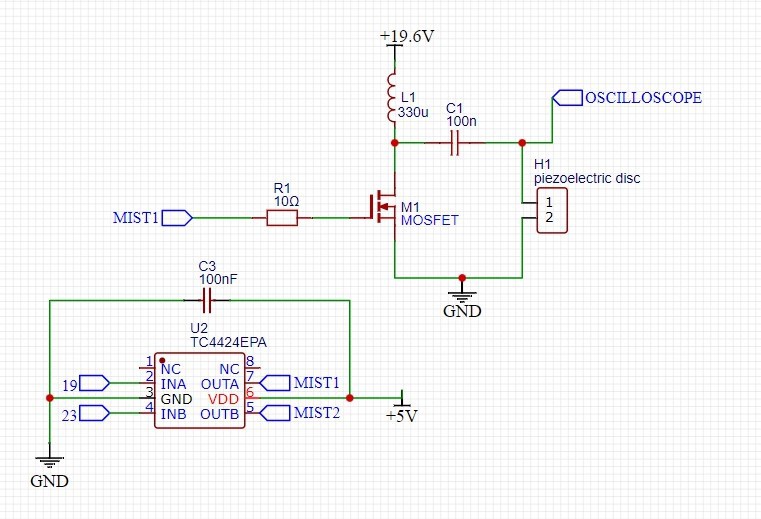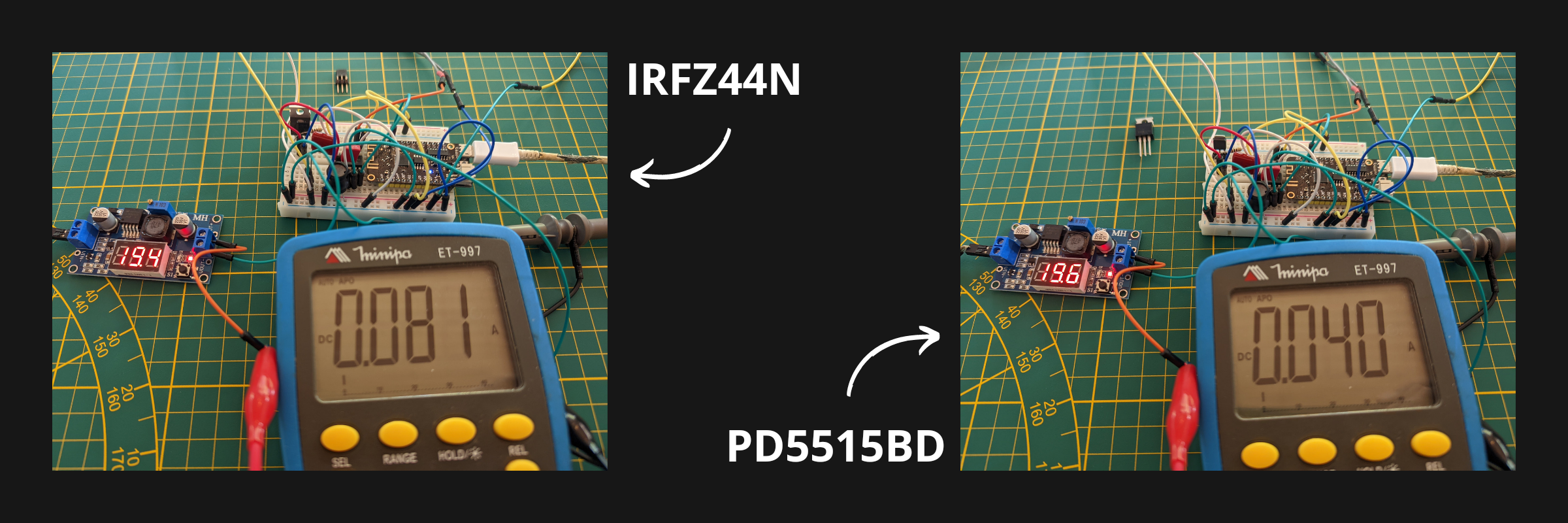When the disks were activated at a frequency of 108 kHz the MOSFETs slowly increased in temperature. The trick is to put 3 of them and to alternate their activations to allow a cooling.
It was necessary to find a solution, because the generation of heat is a waste of energy and moreover I cannot put the disks in continuous activation.
We need to get out the oscilloscope to understand.
Here is the circuit used:

The only component tested in this log is the MOSFET M1.
The oscilloscope is between the capacitor and the disk.
With the IRFZ44N MOSFET:

We observe that a plateau is created at 56V, which is responsible for the creation of heat as lowering the source voltage from 19.6V to 16V the plateau disappears, the MOSFET is cold but the power of the disk decreases.
In the LTSpice simulation with this choice of coil and capacitor there should be no plateau. But this 56V plateau corresponds to the Drain-to-Source Breakdown Voltage of the IRFZ44N.
It is necessary to change MOSFET and to take a higher Drain-to-Source Breakdown Voltage.
I searched in my stocks and had some P5515BDs left (with Drain-to-Source Breakdown Voltage of 150V)
Perfect for testing.
With the PD5515BD MOSFET:

There is no more plateau and Vmax reaches 77V, the coil and capacitor are working at their full capacity, they are not limited by the MOSFET anymore.
Energy efficiency

As we can see with a well dimensioned MOSFET the consumption is divided by 2!
Small victory of the day!
Summary
The MOSFETs do not heat up at all (for the 108 kHz frequency), and we can use them continuously.
The power of the disks has increased, they create more fog with a power consumption divided by 2!
For the final version of the project I think to use the PD530N15N3 G MOSFET from Infineon.
For the moment I will test this version with the P5515BD on a home made PCB.
Stay tuned
 J Gleyzes
J Gleyzes
Discussions
Become a Hackaday.io Member
Create an account to leave a comment. Already have an account? Log In.